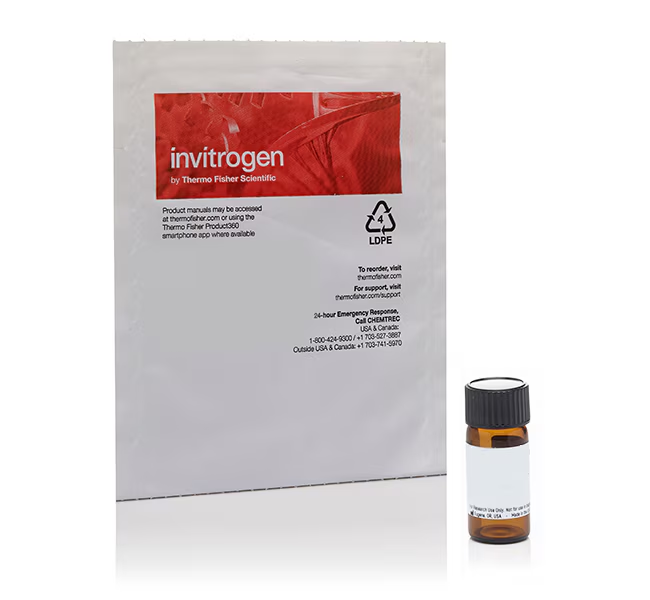
Labeled dextrans are hydrophilic polysaccharides most commonly used in microscopy studies to monitor cell division, track the movement of live cells, and to report the hydrodynamic properties of the cytoplasmic matrix. The labeled dextran is commonly introduced into the cells via microinjection.
Need a different emission spectrum or longer tracking? View our other mammalian cell tracking products.
Dextran Specifications:
• Label (Ex/Em): Texas Red™ (595/615)
• Size: 3,000 MW
• Charge: Zwitterionic
• Fixable: Fixable via Lysine
High Manufacturing Standards of Molecular Probes™ Dextrans
We offer more than 50 fluorescent and biotinylated dextran conjugates in several molecular weight ranges. Dextrans are hydrophilic polysaccharides characterized by their moderate-to-high molecular weight, good water solubility, and low toxicity. They also generally exhibit low immunogeniticy. Dextrans are biologically inert due to their uncommon poly-(α-D-1,6-glucose) linkages, which render them resistant to cleavage by most endogenous cellular glycosidases.
In most cases, Molecular Probes™ fluorescent dextrans are much brighter and have higher negative charge than dextrans available from other sources. Furthermore, we use rigorous methods for removing as much unconjugated dye as practical, and then assay our dextran conjugates by thin-layer chromatography to help ensure the absence of low molecular weight contaminants.
A Wide Selection of Substituents and Molecular Weights
Molecular Probes™ dextrans are conjugated to biotin or a wide variety of fluorophores, including seven of our Alexa Fluor™ dyes (Molecular Probes dextran conjugates–Table 14.4) and are available in these nominal molecular weights (MW): 3,000; 10,000; 40,000; 70,000; 500,000; and 2,000,000 daltons.
Dextran Net Charge and Fixability
We employ succinimidyl coupling of our dyes to the dextran molecule, which, in most cases, results in a neutral or anionic dextran. The reaction used to produce the Rhodamine Green™ and Alexa Fluor™ 488 dextrans results in the final product being neutral, anionic, or cationic. The Alexa Fluor™, Cascade Blue™, lucifer yellow, fluorescein, and Oregon Green™ dextrans are intrinsically anionic, whereas most of the dextrans labeled with the zwitterionic rhodamine B, tetramethylrhodamine, and Texas Red™ dyes are essentially neutral. To produce more highly anionic dextrans, we have developed a proprietary procedure for adding negatively charged groups to the dextran carriers; these products are designated “polyanionic” dextrans.
Some applications require that the dextran tracer be treated with formaldehyde or glutaraldehyde for subsequent analysis. For these applications, we offer “lysine-fixable” versions of most of our dextran conjugates of fluorophores or biotin. These dextrans have covalently bound lysine residues that permit dextran tracers to be conjugated to surrounding biomolecules by aldehyde-mediated fixation for subsequent detection by immunohistochemical and ultrastructural techniques. We have also shown that all of our 10,000 MW Alexa Fluor™ dextran conjugates can be fixed with aldehyde-based fixatives.
Key Applications Using Labeled Dextrans
There are a multitude of citations describing the use of labeled dextrans. Some of the most common uses include:
• Neuronal tracing (anterograde and retrograde) in live cells
• Cell lineage tracing in live cells
• Neuroanatomical tracing
• Examining intercellular communications (e.g., in gap junctions, during wound healing, and during embryonic development)
• Investigating vascular permeability and blood–brain barrier integrity
• Tracking endocytosis
• Monitoring acidification (some dextran–dye conjugates are pH-sensitive)
• Studying the hydrodynamic properties of the cytoplasmic matrix
For Research Use Only. Not intended for any animal or human therapeutic or diagnostic use.
| Code | Description |
|---|---|
| D3328 | Catalog Number: D3328 |

